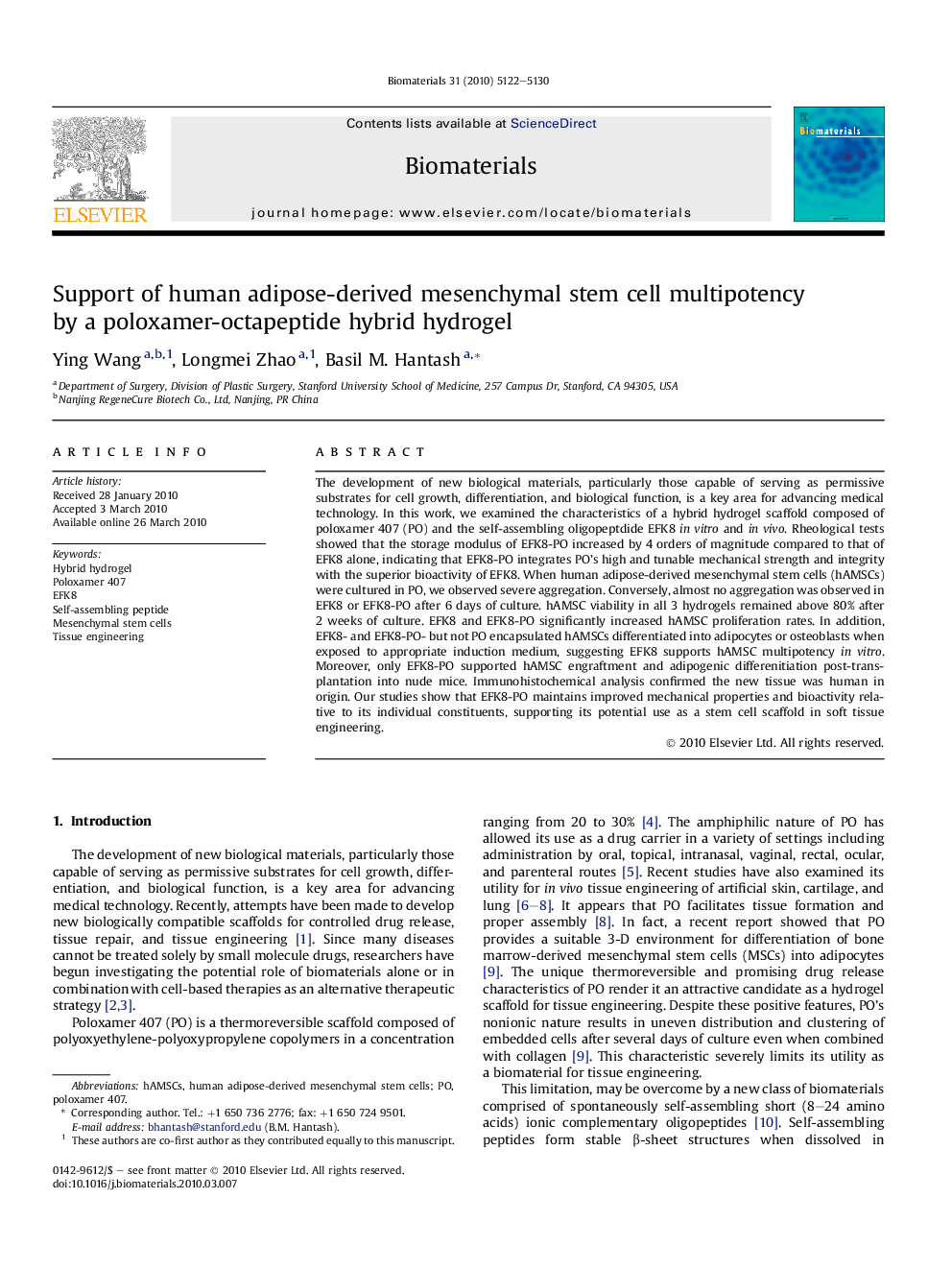| Article ID | Journal | Published Year | Pages | File Type |
|---|---|---|---|---|
| 8374 | Biomaterials | 2010 | 9 Pages |
The development of new biological materials, particularly those capable of serving as permissive substrates for cell growth, differentiation, and biological function, is a key area for advancing medical technology. In this work, we examined the characteristics of a hybrid hydrogel scaffold composed of poloxamer 407 (PO) and the self-assembling oligopeptdide EFK8 in vitro and in vivo. Rheological tests showed that the storage modulus of EFK8-PO increased by 4 orders of magnitude compared to that of EFK8 alone, indicating that EFK8-PO integrates PO’s high and tunable mechanical strength and integrity with the superior bioactivity of EFK8. When human adipose-derived mesenchymal stem cells (hAMSCs) were cultured in PO, we observed severe aggregation. Conversely, almost no aggregation was observed in EFK8 or EFK8-PO after 6 days of culture. hAMSC viability in all 3 hydrogels remained above 80% after 2 weeks of culture. EFK8 and EFK8-PO significantly increased hAMSC proliferation rates. In addition, EFK8- and EFK8-PO- but not PO encapsulated hAMSCs differentiated into adipocytes or osteoblasts when exposed to appropriate induction medium, suggesting EFK8 supports hAMSC multipotency in vitro. Moreover, only EFK8-PO supported hAMSC engraftment and adipogenic differenitiation post-transplantation into nude mice. Immunohistochemical analysis confirmed the new tissue was human in origin. Our studies show that EFK8-PO maintains improved mechanical properties and bioactivity relative to its individual constituents, supporting its potential use as a stem cell scaffold in soft tissue engineering.
